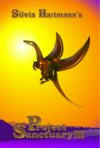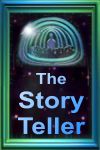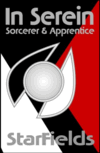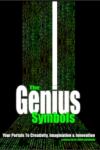Non-Fiction Book Writing Tips
by Silvia Hartmann
60s
Model For Writing A Non-Fiction Book -
Non-Fiction Structure - "The
A-Z Of ..." -
Fastest & Easiest Way To "Write" A Non Fiction Book -
Write A Non-Fiction
Book By Charting A Journey -
Write A Non-Fiction Book By Following The Structure Of Your Topic -
Non-Fiction Books & Modular
Writing - 7 Top Tips On
Non-Fiction Book Writing -
Non-Fiction Book Idea
I have just completed an astonishing
TOME - a collection of 365 exercises for wealth creation. It's the biggest
manuscript I've ever handed in, and it just "happened" alongside my ordinary
life without me noticing that much. The 60 Second Wealth Creators project came
about more or less by accident, but in hindsight, it makes for a very useful
model that can be used in non-fiction writing AND marketing (those two are one
and the same, in the end!), so I wrote it up for MindMillion list.
There are other models that make organising and writing a non-fiction book a
whole lot easier and faster than most people would ever believe, so I've added
those to the article.
If you are thinking of writing a non-fiction book, possibly even a
non-fiction ebook for sale on the internet, fear not. If you use the right
structure and approach, you'll find that writing non-fiction books is easy,
logical and fits right in with your life.
I was just thinking that out of all the many ways I've found to "write a
non-fiction book" over the years, the 60s model is in many ways one of the most
interesting.
The model would be as following:
1. Pick a topic.
2. Get an autoresponder.
3. Start writing daily self contained segments on the topic.
4. When you have a head start of twenty or so segments, start advertising your
autoresponder COURSE - free or charge for it. Start collecting subscribers.
5. Keep slightly ahead of your pack of readers (this forces you on! LOL!) until
the whole thing is complete.
6. Now you have a course or a non-fiction book, in handy segments, each one of
which could conceivably be placed as a separate article, in a series, in a
magazine, in an ezine, on separate SEO web pages, as exerpts, as tasters that
you can sell yourself or find a middleman to sell for you.
That is, as far as product development is concerned, one of the most
interesting, modular and potentially useful integrations of creating material (a
lot of material) in a short space of time, with feedback WHILST YOU ARE WRITING
IT, which is also extremely neat, and all the components of marketing and
advertising built right into the structure of it.
Very, very neat model, I'd say.
Here are some more tips on how to write a non-fiction book easily and without
any hassle.
We had the method of "a lesson per day" (or week, or even month). That works
well and there are variations on this.
One particularly neat format for non-fiction is the evergreen "A-Z of ..."
I used that method in Adventures in EFT. I love this because once again, it is
very modular and thus, extremely controllable.
You just sit down and brainstorm a list of (totally unrelated!) topics that
YOU find exciting. Let's say we're writing a non-fiction book on oil painting:
Brushes
Knives
Paint Thinners
Canvases
Primers
Gessos
Pallettes
Clear Varnish
... and whatever you know anything about. Then all you do is fill in the topics
by writing a few concise paragraphs on each one, one or two a day as and when
you feel like it, sort them out so they're alphabetical and HEY! presto, we have
a cool and useful book that is extremely easy to write.
This method lends itself amazingly well to ebooks, because of the structure, you
can ADD new sections ad infinitum, and each time you do, you have a new version
(edition) you can offer for existing customers to download for free.
That really worked a treat for Adventures.
The problem with most people who want to write a book is that they get
themselves bogged down in endless chapters and structures, and when they find
they've forgotten a bit somewhere in the middle, it becomes a nightmare to
insert it.
But there are other good fun shortcuts to book writing.
The fastest way to "write" a book is to give a speech, tape it and then
transcribe it.
I've used this method for EmoTrance 2 and 3, as well as in EmoTrance 1, the
"developmental history" section which could have foreseeably bored the pants off
me, and then the bra, the T-shirt ...
As it was, it is a transcript of a two hour lecture. It is fact filled, fun
packed, lively and interesting - zero hassle, really.
I also used this for the "EmoTrance Healing Circle" document, which isn't a full
length book but a useful bonus document, and that was recorded in exactly 30
minutes, then transcribed.
If you can talk, you have ENDLESS books inside of you, and that process is only
held back by the typing speed of the transcriber!
(One slight addendum to this might be that it helps if you a) have something to
say, and b) you know what you're talking about! lol)
Another good way to structure a book is simply to chart a journey.
Depending on the market, there can be degrees of how personal you make this, or
how structural.
I wrote a MASSIVE tome on dog obedience instructing once, and got totally bogged
down. So eventually, I threw it all out again and started afresh, with that
moment when someone told me I was to take a class and I was shitting myself, and
took it from there forward through time, having the experience unfold from the
basics as the book goes along.
It thereby starts with someone who knows nothing, and ends up with tips on the
most advanced exercises in the most advanced classes - a great format that isn't
used enough in self help.
Sometimes, your topic gives you a structure that you can just fill in,
starting at the beginning and working through to the end. For example, most
processes and activities have step by step components which you can break down
into modules by dealing with one step at a time, from the beginning to the end
of one process.
I used this structure to organise the mass of materials in Advanced Patterns of
EFT, a non-fiction book for therapists who want to treat psychotherapy
clients with EFT. It logically starts with what we need to know before we
even meet the client, then works forward through all the stages of the session,
from the first "Hello" to the final "Farewell".. That forms the central core of
the book, and other patterns are added in "addendum format".
This is one of the easiest and most useful ways in which to organise a
non-fiction book that is an instruction manual, or a "How To", and a good start
for beginners.
The most important thing about writing a book is to understand it as being
a modular unfoldment over time.
It is surprising how quickly you can create a book if you just spend one hour
each day working on that.
I did one or two 1 1/2 hour sessions per day and brought Vampire Solstice home
complete with addendi in 29 days. It's not that long, 75,000 words total, but
that's a whole lot more than most ebooks on the market these days.
The book being modular is a general way of thinking about writing both
fiction and non-fiction. At the end of the day, if your structure is basically
sound, then we are left with simply writing one good sentence at a time, one
good paragraph at a time, one good section at a time.
A book that is made up from good sentences, paragraphs and sections can't
fail to please!
Keeping your writing tight, modular and contained also avoids the greatest
problem in all writing - getting bored, getting bogged down, getting lost and
not wanting to add to the manuscript any longer. You get a lot of little
successes as you "finish" each paragraph, each chapter; and also, you get a
fresh new start on each new module. It makes the editing process much easier,
and finding excerpts to publish, as well.
Further good advice is as follows:
1. Just start. If you don't, there's no chance there will ever be any book!
2. Don't take it so seriously. It's only one book (of many). In every sense of
the word. Just do your best with it.
3. Keep it modular and contained. Work on a chapter or a section at a time and
make sure that works well, then move onto the next. That way the thing happens
as if by magic.
4. Don't re-read what you have already written, work forward, do NOT ever edit
during the writing phase, and turn those GODDAMNED spell check and grammer check
SQUIGGLES in MS word OFF OFF OFF!!!! Just get your words on the page, get them
flowing, get GOING FORWARD. Once you have the text down, you can edit to your
heart's content later. Without the text, there's nothing to edit.
5. Spend some time on the "Introduction to ..." paragraph. That's your set up,
where you explain who this book is for, and what it contains. It helps to know
that up front. <g>
6. Spend 15 minutes doing it EVERY DAY, come rain or shine, and as a priority,
like first thing when you get up, and NOT at the end of a dreary day when you're
all worn out and brain dead. That's a matter of discipline and valuing your work
but extremely important so your writing stays sharp and focused all the way
through.
7. Start thinking of ways to market or sell your manuscript long before it is
finished. This may actually allow you to INCLUDE segments that will appeal to a
specific market which will help later with the advertising, and it keeps the
whole thing reality bound in a very nice way.
One last tip.
To get a good idea for a book to write, write the sales page for it first.
Put down the benefits, the main topics that will be discussed, who it's for,
what they will gain, how they'll be surprised.
In writing the sales page, the product BECOMES. That's a magical process and
very cool indeed, and one the easiest ways of SHAPING a book before the first
word is ever written.
Good luck all around,
SFX
* This article was first posted to the MindMillion group, July 2006
References:
60s
Model For Writing A Non-Fiction Book -
Non-Fiction
Structure - "The A-Z Of ..." -
Fastest & Easiest Way To "Write" A Non Fiction Book -
Write A Non-Fiction Book By Charting A Journey -
Write A Non-Fiction Book By Following The Structure Of Your Topic
-
Non-Fiction Books & Modular Writing -
7 Top Tips On
Non-Fiction Book Writing -
Non-Fiction Book Idea
Non-Fiction Book Writing Tips by Silvia Hartmann
July 2006. All Rights Reserved. |





